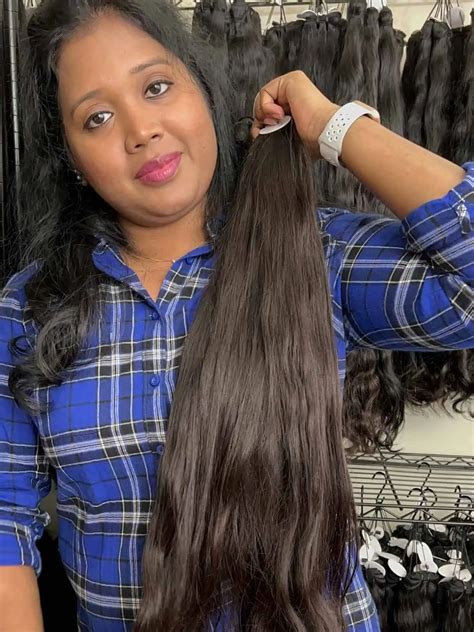Raw Indian Hair: Unprocessed and Untreated
Raw Indian hair, also known as virgin or temple hair, is the most luxurious and sought-after hair extension on the market. It is collected from temples in India, where women donate their hair as a religious offering. This hair is then carefully processed to remove any impurities, but it is not chemically treated, colored, or permed. As a result, raw Indian hair retains its natural cuticle, which gives it a healthy, shiny appearance.

Benefits of Raw Indian Hair
- Natural and healthy: Raw Indian hair is unprocessed and untreated, so it retains its natural cuticle. This cuticle helps to protect the hair from damage and keeps it looking shiny and healthy.
- Versatile: Raw Indian hair can be styled in a variety of ways, from sleek and straight to voluminous and curly. It can also be dyed or bleached to achieve any desired color.
- Long-lasting: Raw Indian hair can last for up to two years with proper care. This is because the hair is strong and durable, and it does not easily break or tangle.
- Ethically sourced: Raw Indian hair is ethically sourced from temples in India. This means that the hair is not taken from unwilling donors, and that the donors are compensated fairly for their hair.
Types of Raw Indian Hair
There are two main types of raw Indian hair:
- Temple hair: Temple hair is the most expensive and highest quality type of raw Indian hair. It is collected from temples in India, where women donate their hair as a religious offering. Temple hair is typically long, thick, and silky smooth.
- Remy hair: Remy hair is a type of raw Indian hair that has been collected from a single donor. This ensures that all of the hair cuticles are aligned in the same direction, which reduces tangling and matting. Remy hair is slightly less expensive than temple hair, but it is still a high-quality product.
How to Care for Raw Indian Hair
Raw Indian hair requires special care to keep it looking its best. Here are a few tips:
- Wash your hair less often. Raw Indian hair does not need to be washed as often as other types of hair. Washing it too often can strip away its natural oils and make it dry and brittle.
- Use a sulfate-free shampoo and conditioner. Sulfates are harsh detergents that can damage raw Indian hair. Instead, use a sulfate-free shampoo and conditioner that is designed for natural hair.
- Avoid heat styling. Heat styling can damage raw Indian hair. If you must use heat, use a low setting and be sure to use a heat protectant spray.
- Get regular trims. Regular trims will help to remove split ends and keep your hair looking healthy.
Conclusion
Raw Indian hair is the most luxurious and sought-after hair extension on the market. It is natural, healthy, versatile, long-lasting, and ethically sourced. With proper care, raw Indian hair can last for up to two years. If you are looking for hair extensions that will give you a beautiful, natural look, then raw Indian hair is the perfect choice for you.
